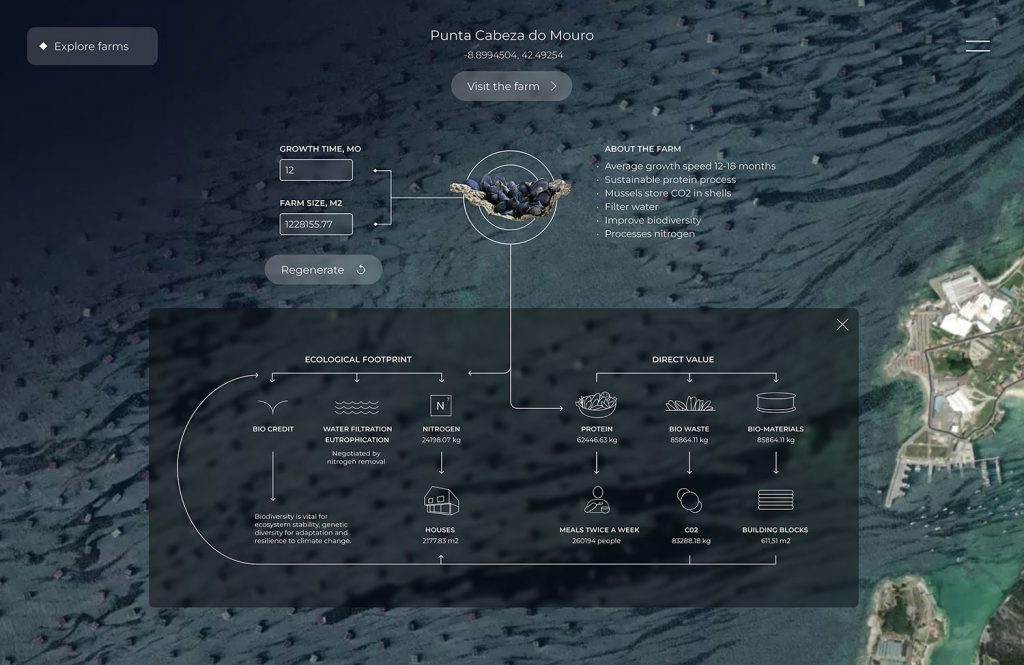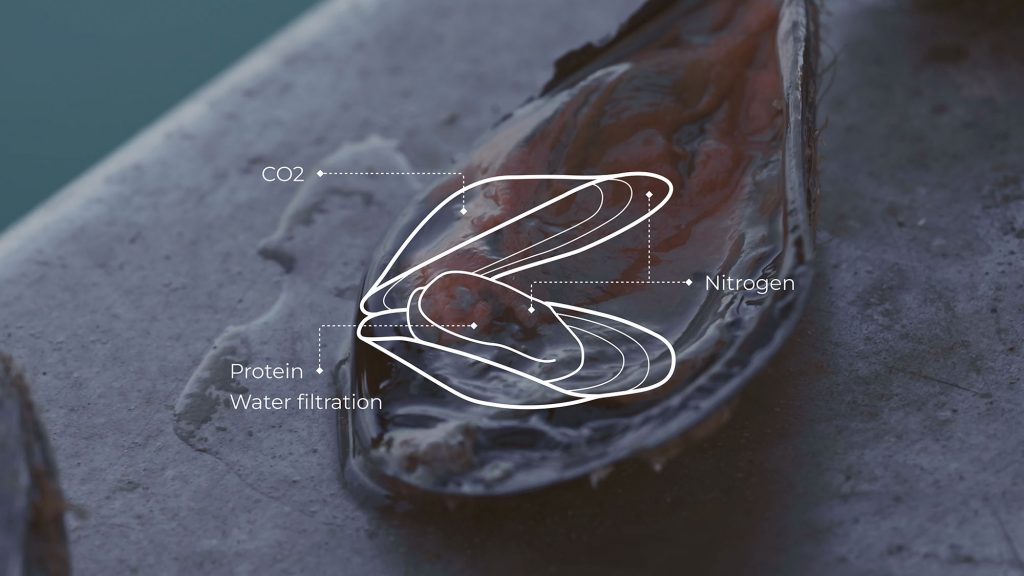HUNGRY ECOCITIES : Humanizing Technology Experiments
+ FUTURE PROTEIN
Reimagining Urban Nutrition
Future Protein is a prototype location scouting and assessment tool for sustainable food production, starting with mussels. A micro simulation tool for true food production value.
INNOVATION RELEVANCE
Mussels are considered a nutritious seafood choice, offering a range of important nutrients. They are an excellent source of high-quality proteins, omega-3, vitamins (A, B, C), minerals (iron, selenium, zinc). They are low in calories, fat, carbohydrates. They are low in cost (so a food for many) and a responsible choice of protein because of the sustainable farming practices. In the food transition, it is clear that mussels must become a (much) larger part of our future diet. However, the production of mussels in Europe is declining, even though the EU considers it an important food source for the future. This is mostly due to the economic unsustainability (price of mussels does not weigh up against the investment to produce). This is a mistake, since the value of mussels goes far beyond being a food source for humans. Yet, the benefits to nature are not priced into the equation. Future Protein aims to change this.
To calculate the true value of mussels for humans and nature, multiple factors need to be considered, including positive ecological benefits (nitrogen storage), the food value for humans (sustainable protein source), the water filtration capacity, the biodiversity support (a food source for other species), the sustainability factor (reproduction rate and conservation status), the biomaterial production (calcium carbonate shells) as well as the negative factors including harvesting costs and impacts and potential negative side effects (e.g. invasive species introduction).
Through a formula taking into account all these factors, an assessment of the true value of mussel farming can be made. In combination with a remote sensing-based predictive model, this forms a prototype product that could predict where to produce what type of mussels basing it on its total produced value (all positive and negative effects). Although not tested yet, this is not only relevant for mussels. The tool could be extended to land surfaces as well, allowing predictions of what to produce where intelligently both on the land and in the water.

WHAT DOES IT DO
The current version, an early prototype, can estimate the total producible weight of mussels in kilograms for any water location in the world through a ‘generate mussel farm’ functionality. This is a rough estimate, as the model does not take into account many factors relevant for a reliable assessment. It gives a rough estimate for the amount of protein bred, the amount of nitrogen captured and the amount of biomaterial produced when generating a new farm, anywhere in the world.
ART RELEVANCE
IM-A Studio ‘s Future Protein explores sustainable urban nutrition through an intimate dinner experience. In the first performance setting, the project showcases mussels as an alternative protein source in a three-course meal accompanied with tableware created from the waste-stream (shells) of mussels. Guests engage with a custom app, identifying potential mussel farm locations globally. This interdisciplinary approach blends culinary innovation, technology, and environmental consciousness, challenging our relationship with food production and consumption. By elevating mussels from overlooked ingredient to gourmet centerpiece, Future Protein offers a tangible vision of sustainable urban dining. The project exemplifies art’s power to inspire solutions to pressing global challenges, paving the way for resilient, delicious urban futures.
TEAM
Artist: IMA-Studio
Art-driven innovation: In4Art
Science: Brno University of Technology

The HungryEcoCities project has received funding from the European Union’s Horizon Europe research and innovation programme under grant agreement 101069990.
